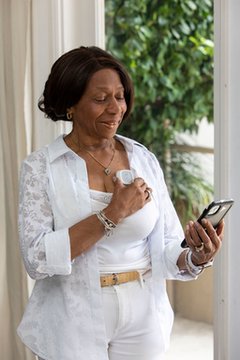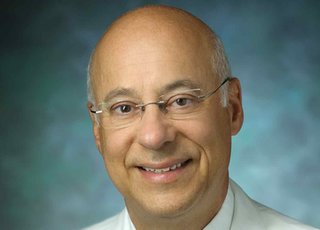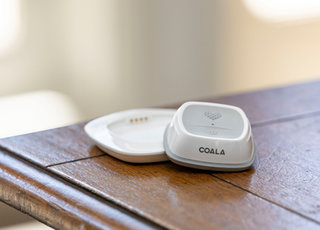Next-Level Cardiac Monitoring
Prior to Covid-19, telehealth was a magnet environment for technology geeks and digital innovators, but hardly so for a critical mass of healthcare providers. Now, with the pandemic having exposed the dangerous deficiencies of legacy healthcare models for patients that require frequent follow-up, it is more relevant than ever, and the cardiac remote monitoring space is its most advanced development opportunity. On this high-stakes innovation front, Coala Life is the flag bearer of the revolution-like changes made possible by this healthcare modality

A telehealth pioneer
Ten years ago, while working around the clock in the final negotiations to sell one of his previous medical ventures, Siberg was rushed to an emergency room with chest pain and rapid heartbeat. The symptoms proved to be the result of overwork, stress, and caffeine, and the anguish he felt while waiting for hours to learn the results of his ECG and other heart tests that were administered to him made him wonder why physicians were not making better use of available technologies to accelerate the process. That´s how the idea for Coala Life was born: bringing transformative detection technologies into mainstream clinical practice to help discard or, conversely, act promptly on heart disease.
Today, the company’s flagship device, the Coala Heart Monitor, is clinically validated to detect heart multiple arrhythmias, to record and transmit data in real time, and to alert doctors in case of an emergency. The company has raised $25 million funding till-date and now in plans to raise additional acceleration funds.
Coala's foray into the U.S. comes against the backdrop of the company's strong success across the Europe, where it has thousands of users and hundreds of healthcare providers connected to the platform and a strong set of clinicians and partners backing the solution. “It was time for us to go global,” explains Siberg. Coala’s growing popularity in the U.S. and Europe is a testimony to the fact that algorithms and remote monitoring have groundbreaking capacity to enable large savings for healthcare.
Through innovation in technology, design and connectivity, Coala Life is reimagining possibilities of remote monitoring to bring a fully integrated solution that works for health systems, payors, and consumers. "Our solutions are extremely patient-centric and patient favorable. It's affordable. The provider gets better diagnostic yield and is fairly reimbursed. And the payors in the U.S. love it because it's about a fourth of the cost of a typical medical solution in our space," remarks Siberg.
"Coala has a great potential in this country. It’s a fabulous, compact, high quality, innovative device; apt for home monitoring. Its diagnostics accuracy is absolutely great. The device's multiple capabilities are of tremendous value in the surveillance and monitoring of cardiac patients. Numerous patients of mine are benefiting from using Coala. This is a perfect monitoring device for high-risk Medicare patients at home. This is indeed the next level of telemedicine.
There are some major players who are trying to emerge in this in this space. But Coala Life has done all the heavy lifting. They have the experience and technology to back them. They're the really the goliath in the space. Every telemedicine expert should lay hands on Coala," emphasizes Jerome Dwyer, MD, a cardiologist and president of St. Louis Cardiology Center.
Philip Siberg has been busy crisscrossing the U.S. in the last 12 months striking deals, exploring collaborations and inking partnerships with clinicians and healthcare providers with a mission of helping deliver improved outcomes to patients in a variety of environments. "We’re leading the transition to patient empowered, real-time monitoring of heart and lungs. Our medical innovations bridge the gap between patient expectations and healthcare needs by enabling long-term remote monitoring and virtual diagnostics. Our mission is clear, it’s about generating clinical data to help win the battle against the world’s foremost public disease,” says Siberg, president & co-founder of Coala Life.


Philip Siberg,
President & co-founder of Coala Life

Dr. Jerome Dwyer and Philip Siberg
How it works
Spanning the boundary between consumer wearables and clinically relevant monitoring technology, the Coala Monitor is the first patch-free, spotcheck-based, FDA-cleared prescription heart monitor that provides immediate patient and physician feedback with diagnostic quality ECG analysis. Once connected through Bluetooth to a smartphone, it takes 60 seconds to capture an ECG and a heart sound reading, using thumb and chest placements. The device´s algorithms then correlate and analyze the ECG and heart sound recording in real time and present the results to the patient in the Coala App, and simultaneously to the physician in the more comprehensive HIPAA-compliant cloud-based Coala platform.
“This is very different from consumer ECG devices and watches, which are not intended to be used as basis for diagnosis. They often rely on pulse wave detection on the arm leading to higher rates of false positives and unnecessary burden on healthcare. Since our device analyzes the activity of the sinoatrial node by high-resolution, multi-lead ECG in real-time, we get a phenomenal detection accuracy,” Siberg says. Data presented at the 2019 European Society of Cardiology annual meeting demonstrated that the Coala device detects atrial fibrillation (AFib) with a 300% higher accuracy than that of single-lead ECG (the technology used by most consumer wearables that claim to provide that service).

Covid-19: Accelerating remote monitoring
The Covid-19 pandemic has accelerated tendencies that were already under way in healthcare and medicine, such as the integration of remote monitoring technologies and AI-powered solutions to shoulder some of the burden and dilute the risks assumed by overexposed healthcare workers. Cardiovascular medicine, already permeated by a culture of continuous technological innovation, quickly picked up the gauntlet thrown by the coronavirus crisis and shifted all the traditional hands-on care it could to remote hands-off telemedicine.
But Coala Life looked even farther ahead and prepared itself for two complicated scenarios that it envisioned could be exacerbated by the pandemic: heart arrhythmia patients who get infected with coronavirus and coronavirus patients who develop arrhythmias. Indeed, one of the main cardiac complications for which coronavirus patients are at risk for is the potential for QT interval prolongation that may occur as a side effect of being treated with the repurposed antimalarial drugs hydroxychloroquine and azithromycin, which in turn may provoke ventricular arrhythmia.
In addition, Coala’s team was quick to take advantage of the FDA's emergency guidance, published in March 2020 that focused on the importance of patient follow-up as a means of controlling the spread of the Covid-19 pandemic. The guidance has provided further impetus for the growing acceptance of telemetry as a bona fide means of detecting disease. Yet unlike conventional medical devices, whose diagnostic effectiveness for the novel coronavirus often depends on hospital-based observations, the Coala responded with a three-pronged strategy: it offered home enrolment, expanded its algorithm to detect a wider variety of arrhythmias and enabled virtual lung auscultation.
Specifically, the earlier version of Coala’s algorithm detected only one type of arrhythmia, AFib, but with the expanded algorithm it is now capable of recognizing nine others including AV block II, tachycardia, multiple premature atrial contractions (PACs), and multiple premature ventricular contractions (PVCs), in addition to normal sinus rhythm. This makes it the world´s only smartphone-powered ECG solution with such a wide range of arrhythmia detection capabilities. That´s a huge benefit for patients in the context of Covid-19 and beyond.
In anticipation of the ripple-down effects of the pandemic, the company expanded the capabilities of its heart monitor for use in respiratory diagnostic exams. It upgraded its algorithms to harvest and process more data from its integrated stethoscope, such that a patient´s physician can listen to remotely captured respiratory sounds. As a result, almost overnight the Coala Monitor transformed itself into an important tool for real-time home monitoring not only of patients with cardiac issues but also of those with coronavirus symptoms and confirmed diagnoses. Coala now makes it possible for virtual auscultation to manage and keep patients safe at home and remotely assess when patients are starting to develop pneumonia or other respiratory complications.
Launching a home enrolment solution was key to Coala’s success—the device is now directly shipped to the patient’s home. The patients conduct their own investigation and record ECG and heart sound using a Coala Heart Monitor. Along with the convenience this means for users, since the technology does not require the use of patches or wires, the fully remote model drastically reduces the increased risk of infection associated with simply being in a hospital. Similarly, it allows quarantined patients to easily monitor their heart and record their lung sounds while their physician can remotely read and analyze the data. “The elderly population in combination with cardiovascular disease are particularly at risk of adverse outcomes of Covid-19 and are therefore encouraged to stay at home and limit close contact with other people. Minimizing unnecessary physical meetings will reduce the risk of exposure as well as lower the burden on the healthcare system,” notes Siberg.
“Covid-19 has abruptly changed everything. It has brought in awareness about telecardiology. These days, patients do not like to visit doctors for routine check-ups. Who wants to sit in the waiting room to see a doctor? To see a doctor, you need to take off from work, drive, park and wait for hours—it's indeed a big ordeal for a 10 minute appointment. Devices like Coala helps us listen to heart and lungs, which meets our immediate need to evaluate the patients remotely. The transition to telemedicine and virtual diagnostics is here to stay. Coala is a powerful tool for real-time diagnostics, and ideal for patients

Gil Vardi, MD, Interventional Cardiologist
St Louis Heart and Vascular (SLHV) Clinics
with suspected or confirmed cardiac disease, as well as monitoring pulmonary issues such as COPD," says Gil Vardi, MD, interventional cardiologist at St Louis Heart and Vascular (SLHV) Clinics, another clinical center that has partnered with Coala Life. Its collaboration is aimed at evaluating around-the-clock integrated monitoring services to support specific reimbursement requirements.
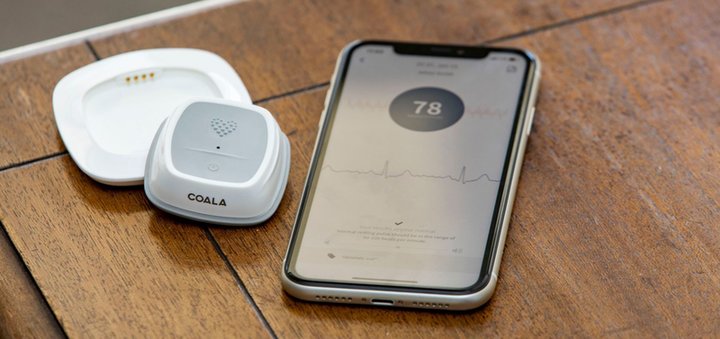
Chronic care management
Post-operative monitoring
Chronic care management is one of the U.S. healthcare system´s “toughest nuts to crack” because of its dependence on risk mitigation rather than on directly billable hospital care. Chronic conditions affect 133 million Americans, and nearly half of those individuals are living with multiple conditions. More than 75 percent of all healthcare costs are used to treat chronic conditions.
Since the onset of the pandemic, physicians who care for patients with chronic conditions – most of whom live with several comorbidities that make regular in-office visits all the more challenging – have been working to reinforce measures to prevent them from experiencing a relapse in their illness or from new complications arising, that would make an in-person appointment a necessity. Since such patients are also at an increased risk of getting severely sick from Covid if infected, caring for them from a distance has become even more important.
In line with this shift, Coala is working with hospitals and health systems to help them extend chronic care management to patient’s homes through telehealth and remote monitoring. The company has initiated a number of partnerships with local physician practices that cater to people living with cardiac chronic conditions. One such collaboration, launched within the framework of the Centers for Medicaid and Medicare Services´ increased coverage for tele- health services, includes patients in need of ongoing cardiac monitoring and provides real-time analysis of the collected data. The partnership, with My Cardiologist, one of the largest private cardiology service providers in southern Florida, aims to become the most compreh-ensive cardiac RPM program to date and to simultaneously serve as a proof-of-concept for Coala´s utility in long-term care environments. "Such RPM programs combined with virtual check-ins
can replace many of the current inpatient visits related to adjusting and managing treatments," notes Siberg.
With CMS reimbursement available for remote monitoring, providers can use CPT Codes 99457 and 99458 to bill for remote patient monitoring services and 99453 for patient education and set-up. These codes allow for quick deployment and scaling of remote monitoring programs by providing the financial structure for physicians and qualified medical professionals to be reimbursed for their time spent on patient care.
Looking ahead, Dwyer adds that the device´s capability for lung auscultation is especially valuable because it allows physicians to listen to respiratory sounds at the base, midfield, and upper regions from any remote location relative to their patient. “Even in hospital isolation rooms, you normally find stethoscopes through which you hardly hear anything, so the Coala can
be used for in-person visits as well to monitor and record patient vitals. A device like Coala can be easily sterilized before using it on another patient; it can easily be wiped with alcohol or it could be put into one of those small UV cleansing machines like the one they use for cell phones.”
And beyond the pandemic, where it has been useful for detecting QT prolongation as an effect of hydroxychloroquine, Dwyer mentions Coala can be just as critical in evaluating the ECG profiles of lupus and rheumatoid arthritis patients treated with that and similar drugs. “A lot of those patients have been ignored as far as the concerns about ECG changes and ventricular arrhythmias. There is a prevalence of ECG abnormalities among such patients and an early detection may prevent heart disease. It is critical to evaluate the ECG profiles of patients subjected to medications like HCQ, especially in older patients.”
“It is empowering to patients to be able to get a real-time response instead of waiting for weeks to get a report of their ECG, and they know they get much more reliable information from the Coala than from looking at a consumer smartwatch,” comments Jody Galichia, an interventional cardiologist in Wichita, Kansas. Galichia celebrates the positive patient experience of having at one´s fingertips – literally – a device such as the Coala monitor. “Here is a device that provides you with something more than before. This is telemedicine at its finest,” he says.
Up to 50 percent of patients undergoing cardiac surgery develop cardiac arrhythmias—most frequently AFib—resulting in longer, and costlier, lengths of stay and increased rates of readmission. Post-operative AFib is also associated with higher morbidity and mortality, including stroke.
Coala Life partnered with Reginald Abraham, MD, chief of cardiothoracic Surgery and chief of staff at California-based Fountain Valley Regional Hospital to introduce a new post-procedure protocol based on patient-engaged and real-time cardiac monitoring. The protocol aims to reduce readmission rates, lower costs
of care, reduce physician liability and ultimately improve outcomes. The clinical protocol, now in real-world use on patients, includes the prescription of Coala Heart Monitors to remotely follow surgical patients in real-time in everyday life during an extended period – to enhance management, enable early detection, and more efficient treatment of any post-procedural complications. "I’m proud to pioneer the first post-procedural protocol based on remote, patient-engaged monitoring with real-time analytics. Smart digital technology now enables me to efficiently follow every patient in their recovery, without burden or financial surprises for my patients, says Dr Abraham.
"Almost every one of my patients is hooked up with Coala device. We encourage them to go ahead and place the monitor on their hearts at least once a day or every time they are feeling a change or difference. The transmitted records will be monitored by 24/7 center and alerts me if there are any abnormalities will require a physician to intervene," says Abraham, "Using Coala Heart Monitor allows us to be partners in care early. As a physician it makes me feel great to call my patients and discuss. To know that they (patients) are doing well is very gratifying. You do all this heavy duty invasive work on them and you want to make sure they are doing well. You can affect their life in a very meaningful and dramatic way. Problems are going to happen. It's up to you as a practitioner to be on top of it. To use Coala Heart Monitor as an active surveillance, offers me and my patients a greater degree of freedom. When my patients use Coala, they have a secure feeling that they are being watched remotely and needn't worry."
New Avenues
The Coala Heart Monitor´s clinical utility is being continuously corroborated by cardiologists across the U.S. who discover its capabilities, ease of use, and relevancy for the problems they treat. In the course of commenting on the device´s arrhythmia detection accuracy, some of them also highlight other potential applications for its use.
“I see a great potential for Coala to make inroads into private practicing cardiologists, especially those actively looking at telehealth solutions,” says Jim Dwyer, MD, cardiologist and avid horseman in Prescott, Arizona. “Had devices like the Coala monitor been available two decades ago, the dynamics of medical care would have played out very differently. We could have monitored the heart rhythm of patients who had undergone a bypass surgery or a heart attack or a stroke, could have caught more paroxysmal AFib and put those patients on anticoagulants sooner, and could have prevented strokes and saved lives.”
Validated for monitoring stroke patients
In the recently published TEASE-study (BMJ Open, Aug 2020) the Coala Heart Monitor was used to evaluate 100 patients after cryptogenic stroke. Patients underwent scheduled monitoring twice daily, and when symptoms occurred, for 28 days. The monitoring detected previously undiagnosed atrial fibrillation in 9% of the patients, at a mean of 19.7 days after stroke.
The TEASE-study, led by Peter Magnusson, MD, cardiologist at the Cardiology Clinic in Region Gävleborg, and with academic affiliations to the Karolinska Institute, Stockholm, and Uppsala University, Sweden, showed Coala Heart Monitor can be used to monitor highly vulnerable patients. Thus, in many stroke survivors, this is a feasible approach and they will be potentially protected from recurrent stroke by anticoagulation treatment.
“Prolonged continuous ECG monitoring or insertable cardiac monitors require substantial resources. Thus, while ECG monitoring over an extended period of time is crucial for stroke survivors, post-discharge Holter monitoring or patches are impractical, ECG data storage is limited, and data interpretation requires considerable resources. Insertable cardiac monitors offer continue monitoring and the clinical implication in short episodes regarding anticoagulation is not clear. Therefore, we would recommend a hand-held device like Coala Heart Monitor as the main evaluation tool in the vast majority of cases, even though insertable cardiac monitor or other diagnostic approaches can be useful in selected cases,” comments Magnusson.
The Game Changer
From monitoring symptomatic or asymptomatic Covid patients to chronic care management to monitoring patients after by-pass surgery or stroke, Coala is digitally transforming the field of cardiac diagnostics with a portfolio of CE- and FDA-cleared solutions. As hospitals across the board look to deploy a strong virtual care strategy to supplement or replace in-person services, Coala is there for them. Through its multitude capabilities, its game-changing, patented-innovation continues to serve people with technology that makes care delivery more effective, efficient, affordable, and accessible. By keeping people that do not need emergency medical attention out of hospitals and health clinics, Coala's telehealth and remote patient monitoring solution can help reduce the spread of COVID-19 and ensure limited healthcare resources are put towards the most critical and urgent needs.
Siberg and his team are certainly reimagining healthcare—putting transformative technologies into mainstream practice. Coala's breakthrough device will shape the digital health landscape for years to come and pave way for a new era of virtual care.
For all its multiple other benefits, winning patients´ trust and acceptance just might be the strongest vote of confidence Coala could wish for.

Reginald Abraham, MD

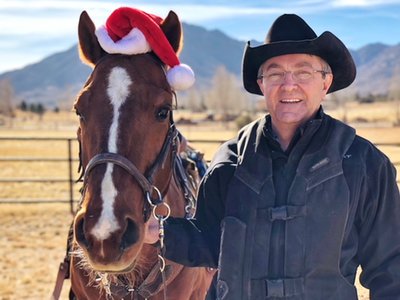

Jim Dwyer, MD
Peter Magnusson, MD
Jody Galichia, an Interventional Cardiologist
